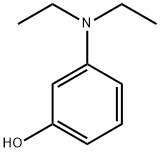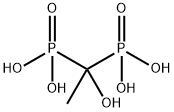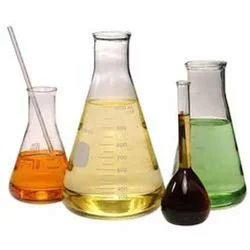1,3-Propanediol
Synonym(s):PG;1,3-Propanediol;Trimethylene glycol;1,3-Dihydroxypropane;Bio-PDO
- CAS NO.:504-63-2
- Empirical Formula: C3H8O2
- Molecular Weight: 76.09
- MDL number: MFCD00002949
- EINECS: 207-997-3
- SAFETY DATA SHEET (SDS)
- Update Date: 2025-12-26 08:49:36

What is 1,3-Propanediol?
Chemical properties
1,3-Propanediol, an isomer of propylene glycol, is a viscous, colorless, odorless, hygroscopic liquid that has a brackish irritating taste. miscible with various solvents such as water, ethanol, acetone, chloroform (chloroform) and ether, and is insoluble in benzene. Combustible.
The Uses of 1,3-Propanediol
1,3-Propanediol is used as a solvent for thin film preparations, in the production of polymers such as polytrimethylene terephthalate, adhesives, laminates, coatings, moldings, aliphatic polyesters, as an antifreeze and in wood paint. It also acts as a reagent for vinyl epoxide synthon, for epoxide ring-opening, for polymerization reactions and for natural product syntheses.
The Uses of 1,3-Propanediol
As a diol, 1,3-propanediol is subject to many of the same polymeric applications as other low molecular mass diols (e.g., ethylene glycol, propylene glycol, and 1,4-butanediol). However, its relatively high price limits its use to applications requiring very specific performance characteristics. It is a raw-material source for 1,3-dioxanes. 1,3-Propanediol-bis(4-aminobenzoate) can be used as a chain extender in polyurethane elastomers. This bisbenzoate, which can also be synthesized from 1,3-dichloro-propane, finds other applications as a cross-linking agent in epoxy formulations and as a rubber additive.
Definition
ChEBI: Propane-1,3-diol is the simplest member of the class of propane-1,3-diols, consisting of propane in which one hydrogen from each methyl group is substituted by a hydroxy group. A colourless, viscous, water-miscible liquid with a high (210℃) boiling point, it is used in the synthesis of certain polymers and as a solvent and antifreeze. It has a role as a protic solvent and a metabolite.
What are the applications of Application
In adipate polyesters with other diols these diols are partly substituted by 1,3-propanediol (PDO) to break crystallinity in order to obtain liquid polyester polyols. In polyesters for powder coatings PDO improves the flexibility but lowers the glass transition temperature somewhat. PDO finds also uses in cosmetics and personal care products, engine coolants, and solvents for ink-jet and screen inks.
What are the applications of Application
1,3-Propanediol is a solvent for thin film preparations
What are the applications of Application
1,3-Propanediol is prepared as a by-product in the manufacture of glycerin by the saponification of fat. It is used to lower the freezing point of water and as a chemical intermediate. Industrial exposure is limited. It is also used to Solvent for thin film preparations, Vinyl epoxide synthon and reagent for epoxide ring-opening and polymerization reactions, Reagent for natural product syntheses.
A new large market for 1,3-propanediol will be in polyester coatings and in the production of poly(trimethylene terephthalate), a new material for the production of high quality carpet fibers.
Biosynthesis
1,3-Propanediol (1,3-PDO) can be produced by fermentation from glycerol, with different strains such as Klebsiella pneumoniae, Clostridium butyricum, Clostridium pasteurianum, and Citrobacter freundii. Drawbacks of industrial fermentation using these strains are strong inhibition of 1,3-PDO production and by-products during fermentation.
Flammability and Explosibility
Non flammable
Synthesis
1,3-Propanediol is produced commercially by Degussa starting from acrolein.
CH2CHCHO + H2O → HOHCH2CH2CHO
HOHCH2CH2CHO + H2 → HOHCH2CH2CH2OH
The addition of water under mild acidic conditions gives 3-hydroxypropionaldehyde with high selectivity. Preferentially buffer solutions with a pH 4-5 or weak acidic ion exchange resins are used as catalysts. Further hydrogenation of this aqueous solutions gives 1,3-propanediol. There is an alternative route via hydroformylation of ethylene oxide and subsequent hydrogenation of the intermediate 3-hydroxypropionaldehyde.
Purification Methods
Dry this diol with K2CO3 and distil it under reduced pressure. More extensive purification involves conversion with benzaldehyde to 2-phenyl-1,3-dioxane (m 47-48o) which is subsequently decomposed by shaking with 0.5M HCl (3mL/g) for 15minutes and standing overnight at room temperature. After neutralisation with K2CO3, the benzaldehyde is removed by steam distillation and the diol is recovered from the remaining aqueous solution by continuous extraction with CHCl3 for 1day. The extract is dried with K2CO3, the CHCl3 is evaporated and the diol is distilled. [Foster et al. Tetrahedron 6 177 1961, Beilstein 1 IV 2493.]
Properties of 1,3-Propanediol
| Melting point: | -27 °C (lit.) |
| Boiling point: | 214 °C/760 mmHg (lit.) |
| Density | 1.053 g/mL at 25 °C (lit.) |
| vapor pressure | 0.8 mm Hg ( 20 °C) |
| refractive index | n |
| FEMA | 4753 | 1,3-PROPANEDIOL |
| Flash point: | >230 °F |
| storage temp. | Store below +30°C. |
| solubility | H2O: soluble |
| form | Oily Liquid |
| pka | 14.46±0.10(Predicted) |
| color | Clear |
| PH | 4.5-7.0 (100g/l, H2O, 20℃) |
| explosive limit | 2.5%(V) |
| Water Solubility | 100 g/L |
| Merck | 14,9714 |
| BRN | 969155 |
| Dielectric constant | 35.0(20℃) |
| CAS DataBase Reference | 504-63-2(CAS DataBase Reference) |
| NIST Chemistry Reference | 1,3-Propanediol(504-63-2) |
| EPA Substance Registry System | 1,3-Propanediol (504-63-2) |
Safety information for 1,3-Propanediol
| Signal word | Warning |
| Pictogram(s) |
 Exclamation Mark Irritant GHS07 |
| GHS Hazard Statements |
H227:Flammable liquids H315:Skin corrosion/irritation |
| Precautionary Statement Codes |
P210:Keep away from heat/sparks/open flames/hot surfaces. — No smoking. P264:Wash hands thoroughly after handling. P264:Wash skin thouroughly after handling. P280:Wear protective gloves/protective clothing/eye protection/face protection. P302+P352:IF ON SKIN: wash with plenty of soap and water. P332+P313:IF SKIN irritation occurs: Get medical advice/attention. P370+P378:In case of fire: Use … for extinction. P403+P235:Store in a well-ventilated place. Keep cool. |
Computed Descriptors for 1,3-Propanediol
| InChIKey | YPFDHNVEDLHUCE-UHFFFAOYSA-N |
1,3-Propanediol manufacturer
JSK Chemicals
New Products
4,4-Difluoropiperidine hydrochloride tert-butyl 9-methoxy-3-azaspiro[5.5]undecane-3-carboxylate Indole Methyl Resin N-Isopropylurea N,N-Dicyclohexylcarbodiimide(DCC) MELDRUMS ACID 5-METHYLISOXAZOLE-4-CARBOXYLIC ACID Magnessium Bis glycinate Zinc ascorbate 1-bromo-2-butyne 2-acetamidophenol 9(10H)-anthracenone Erythrosin B, 4-Piperidinopiperidine 2-((4-morpholinophenylamino) (methylthio) methylene) malononitrile 2,4-dihydroxybenzaldehyde 3-(4-morpholinophenylamino)-5-amino-1H-pyrazole-4-carbonitrile Methyl 2-methylquinoline-6-carboxylate 2,6-dichloro-4-nitropyridine 4-Bromo-2-chlorobenzonitrile 2-(benzylamino)acetic acid hydrochloride 4-(tert-Butoxycarbonylamino)but- 2-ynoic acid 3,4-dihydro-2H-benzo[b][1,4]dioxepine 1-Phenyl-1-cycloprppanecarboxylicacidRelated products of tetrahydrofuran








You may like
-
 1,3-Propanediol CAS 504-63-2View Details
1,3-Propanediol CAS 504-63-2View Details
504-63-2 -
 1,3-Propanediol CAS 504-63-2View Details
1,3-Propanediol CAS 504-63-2View Details
504-63-2 -
 Propane-1,3-Diol CAS 504-63-2View Details
Propane-1,3-Diol CAS 504-63-2View Details
504-63-2 -
 1,3-Propanediol CAS 504-63-2View Details
1,3-Propanediol CAS 504-63-2View Details
504-63-2 -
 1,3-Propanediol CAS 504-63-2View Details
1,3-Propanediol CAS 504-63-2View Details
504-63-2 -
 1,3-Propanediol CAS 504-63-2View Details
1,3-Propanediol CAS 504-63-2View Details
504-63-2 -
 Liquid 1, 3-Propane Diol, Grade Standard: Industrial Grade, 218kgsView Details
Liquid 1, 3-Propane Diol, Grade Standard: Industrial Grade, 218kgsView Details
504-63-2 -
 1,3 Propanediol CAS : 504-63-2, Industrial GradeView Details
1,3 Propanediol CAS : 504-63-2, Industrial GradeView Details
504-63-2
